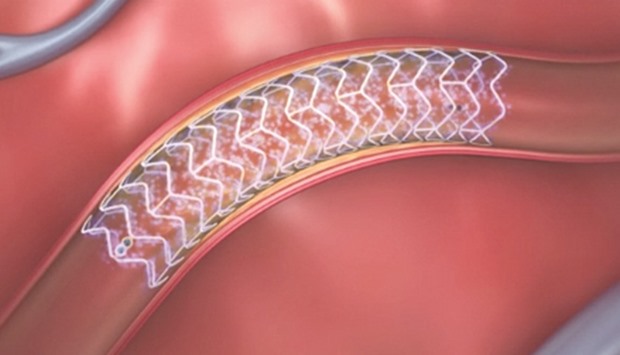Patients who received Abbott Laboratories’ novel dissolving vascular stent had a significantly higher rate of serious adverse heart events than those treated with the company’s widely used Xience drug-coated metal stent two years after implantation, according to data presented recently.
New guidelines for blood vessel size and proper implantation techniques put in place for the new Absorb stent since the study began, however, should lead to better results, researchers said.
They reported that 19% of those who received Absorb in the 2,008-patient trial had it implanted in blood vessels now deemed too small for the device, hurting overall results.
“The difference between Absorb and Xience when they’re both implanted in properly-sized vessels with good procedural technique is likely to be quite modest and possibly not clinically important,” said Dr Stephen Ellis, who presented the data at the American College of Cardiology scientific meeting in Washington. Ellis is director of interventional cardiology at the Cleveland Clinic.
Stents are tiny tubes used to prop open diseased arteries that have been cleared of blockages. The two stents demonstrated similar safety between one and two years, but a difference turned up by the end of year two.
Absorb, which is larger than traditional metal stents, is made of a plastic designed to fully dissolve over the course of about three years, leaving a naturally flexible blood vessel.
After two years in the trial, called Absorb III, 10.9% of Absorb patients had experienced target lesion failure, versus 7.9% of those in the Xience group, a statistically significant difference.
TLF is defined as a combination of heart-related death, heart attack related to the treated vessel and need for repeat procedure due to reclogging of the treated part of the artery. The result was driven by a higher rate of target vessel heart attacks – 7.3% versus 4.9% for Xience.
The difference between the two stents declined and was no longer statistically significant when the smaller-vessel patients were excluded, researchers reported.
Absorb won US approval last July, but longer-term data may be needed to assess its true value.
All of the benefit of using the larger, more-difficult-to-place stent, “if there is going to be a benefit, will come after it has been fully absorbed,” said Ellis.
“We await long-term outcomes,” he said. “If this device doesn’t produce better long-term outcomes, there’s no point in using it.”



